The NVIDIA GeForce GTX 1650 Super Review, Feat. Zotac Gaming: Bringing Balance To 1080p
by Ryan Smith on December 20, 2019 9:00 AM ESTCompute
Along with our usual gaming results, we’ll also take a cursory look at compute performance for the GTX 1650 Super. This is one area where NVIDIA has developed an unusual advantage, at least for the moment, as AMD’s OpenCL driver for the Radeon RX 5000 series cards is currently broken and unfit for production use. I don’t expect anyone to be using a GTX 1650 Super for any serious compute work – generally if you need GPU compute, you’re after higher-end GPUs to really push performance – but if you do find yourself buying a $160 card for compute purposes, among modern cards NVIDIA is currently the only game in town for both OpenCL and CUDA.
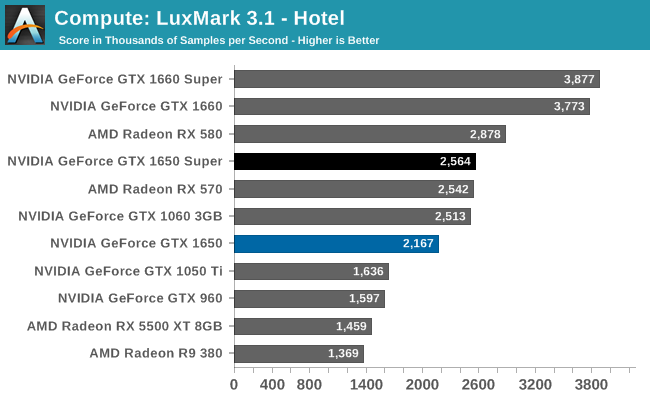
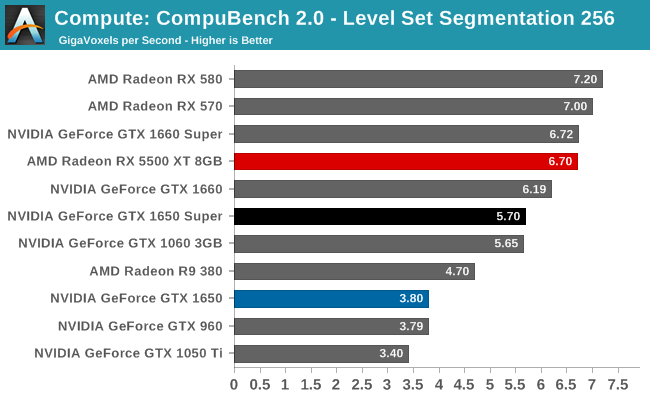
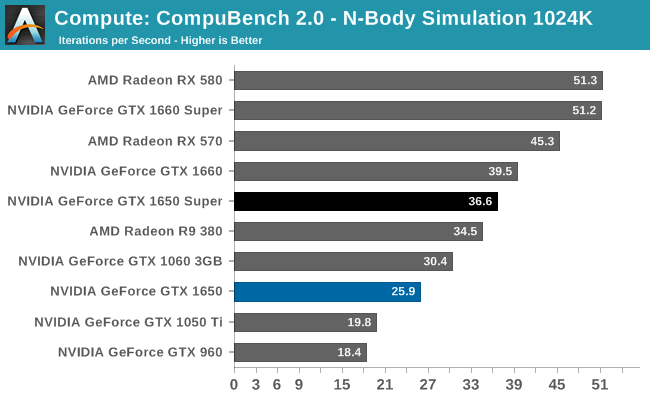
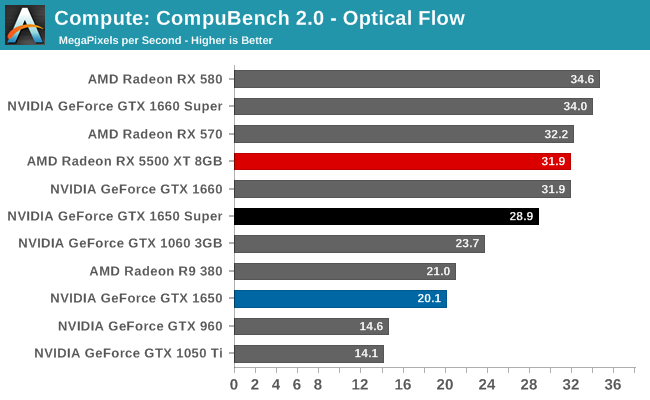
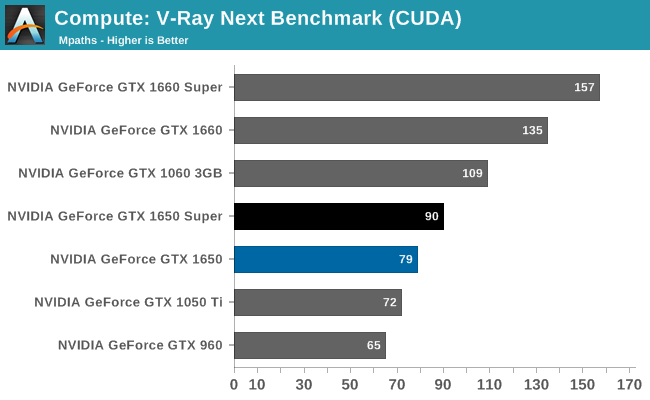
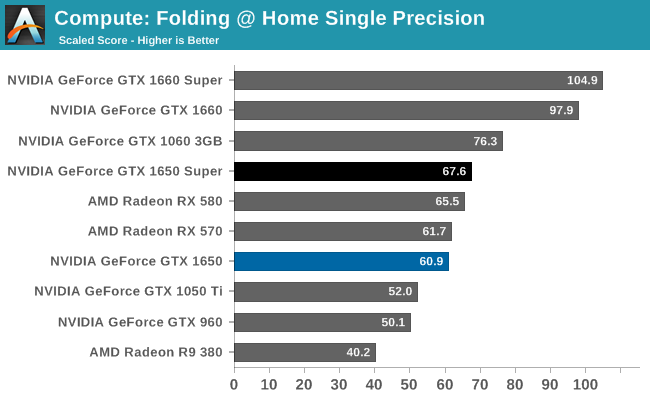










67 Comments
View All Comments
StevoLincolnite - Sunday, December 22, 2019 - link
But if you only paid $100 and it only lasts for a couple years, it's still worth it for that tier of performance, no?Yojimbo - Monday, December 23, 2019 - link
We don't have any data on this, which is why I would avoid a used mining card. We'll never get any data on this, either. The thing is, although one can't tell a well-cared-for gaming card from one not well-cared for, over the years a general knowledge of the expectation of a used part has been built up. In the case of mining it is a big unknown in my view. You don't really know which cards are mining cards and which are gaming, so any card that has been popular with miners is suspect, in my view, unless you know who you are buying from.eastcoast_pete - Sunday, December 22, 2019 - link
Which poses this question: Is there a program ("app") that can run a health check on a card? In addition to any "custom BIOS" , I would also be concerned about simple aging with intense, ongoing use. When manufacturers bin chips and assign them to target speeds, they supposedly do so also based on life expectancy, at least for CPUs. So, is there a way to test how much life the GPU and RAM of a card have left in them?flyingpants265 - Sunday, December 22, 2019 - link
The elephant in the room for the RX580 8GB, and AMD videocards in general, is the almost 200W power draw on a "1080p card", whereas the 1650 uses 75W. It may really suck for the price, but it uses less than half the power. Obviously the RX570 is a great choice as well.Then there's reliability. I've seen statistics from Puget systems and some big online retailer and AMD had some obscenely high failure rates. AMD is a much smaller company, they might have less oversight, and heat causes a lot of damage to complex electronics. Not exactly reliable info but I wouldn't really be surprised if it were somewhat accurate. I believe all consumer products are cheaply made, so I'd rather go with the lower-power, lower-heat, larger company. Too bad I don't have any hard data to back that up.
Not really interested in anecdotal evidence either.
Spunjji - Monday, December 23, 2019 - link
"Too bad I don't have any hard data to back that up.Not really interested in anecdotal evidence either."
Next time start with that pitch, so folks can ignore the self-confessedly uninformed speculative rambling that follows.
If the power draw is a bother on the RX580, a little undervolting will go a very long way without noticeably affecting frame rates at 1080p. It'll also help with longevity. Regardless, none of this is particularly crucial when you're saving ~$50 and getting a faster card with more VRAM.
Spunjji - Monday, December 23, 2019 - link
RX 580 is still good for 1440p too, if you're not obsessed with hitting "Max" on every setting just because it's there.khanikun - Monday, December 30, 2019 - link
Reminds me of back in the day, when I moved to ATI for a very short while. 9700 Pro. Started overheating after a year, then broke. 9600 XT as temporary card. Started overheating in less than a year. 9800 XT. Started overheating in a couple months. Went back to Nvidia and haven't had a reason to look at ATI/AMD cards since.Qasar - Wednesday, January 1, 2020 - link
i have some of those cards from then, 9800pro, 9600pro, used them not to long ago to see if they still work.. and they still do.. heheheheWetKneeHouston - Monday, January 20, 2020 - link
I think it makes sense to think that heat and power would lead to reliability issues. That's why I went with the 1650 Super. It's still too powerful of a card for the low tier (I can't notice the difference with higher settings, I suspect it's a scam lol) 1080p gaming I do, so I probably should have gotten the regular 1650, but they're basically the same price,Yojimbo - Friday, December 20, 2019 - link
Yeah maybe if it cost $50 it would be worth it for running dosbox.